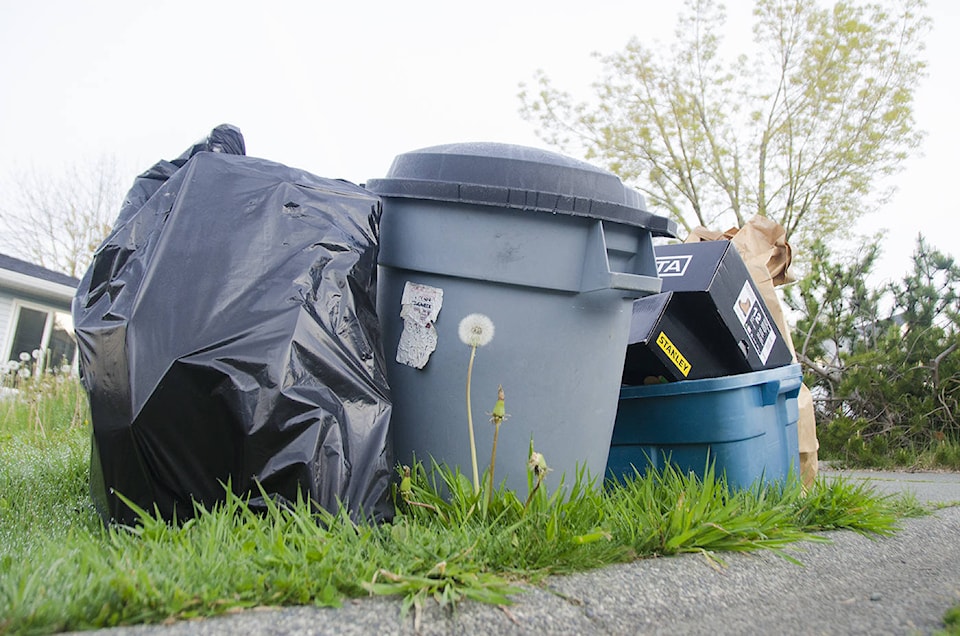Most of what Campbell Riverites are sending to the landfill shouldn’t be going there, according to a new report.
Campbell River city councillors got a look at the report, entitled “2017 Comox Strathcona Waste Management Composition Study,” at a recent meeting.
“The report contains valuable findings regarding the use of existing recycling programs and opportunities to significantly increase overall diversion rates and meet future targets,” says the letter accompanying the study, adding that while “there are acknowledged limitations” and the report does not make specific recommendations, it does provide data that can be used in consideration for municipalities in their “efforts to manage solid waste in the most efficient, environmentally sound and economical fashion possible.”
The study, conducted by AET Group out of Kitchener Ont., took a sample of what was being deposited at both the Campbell River and the Comox Valley Waste Management Centres between Sept. 26 and Oct. 6 of last year. The material comes from Self Haul – people driving their garbage to the facility and paying to drop it off, what’s picked up at the curbside in single-family residential neighbourhoods, construction and demolition disposal, what’s collected at apartment complexes and what is being brought in from commercial and industrial facilities.
Overall, the amount of waste going into the Campbell River facility that was considered “non-divertable,” meaning the dump is exactly where it should be going, was just over 46 per cent.
That means almost 54 per cent should be going somewhere else, whether that’s a recycling or organics processing facility.
At the Campbell River facility, organic material (food waste, yard waste and tissue/towelling) accounted for 30.39 per cent of what was collected during the sample period, while “other divertable material” accounted for 23.59 per cent.
Of this, recyclable paper packaging – largely cardboard and boxboard – was the largest contributor to the divertable materials at six per cent, the report says.
But apparently, people are better at keeping divertable material out of the landfill if they’re taking it there themselves.
Divertable material made up a comparatively minuscule percentage of the Self Haul samples collected, with over 76 per cent of what people are dropping off at the landfill actually belonging there.
Curbside collection in single-family residential neighbourhoods, meanwhile, contained over 56 per cent divertible material.
Industrial and commercial, along with multi-family residential, were the worst contributors of divertible material, with “Small ICI/Multi-Family” – which includes apartments and small businesses – coming in at almost 60 per cent divertible material, and “Large ICI” – which includes hospitals, grocery stores and schools – coming in at 62 per cent.
Coun. Charlie Cornfield, who also sits on the board of Comox Strathcona Regional Solid Waste Management as well as on the Waste to Energy Select Committee, says while the numbers may look bad, he thinks we’re doing other things well, like having curbside pickup for yard waste, which diverts a huge amount of organic material.
“And things will get even better when we get the organics facility up and running,” Cornfield adds. “If we can start source-separating the kitchen scraps (having people separate kitchen waste from the rest of their garbage) and collect it and take it there instead of it going to the dump, we’ll probably get that (non-divertible) number up near the 75 per cent mark.”
